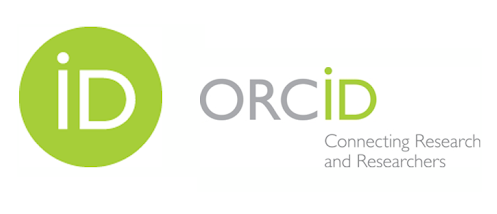Benefits of acupuncture for diabetic patients: Literature review
DOI:
https://doi.org/10.52076/eacad-v3i2.144Keywords:
Diabetes; Acupuncture; Complementary treatment; Teaching.Abstract
According to the Brazilian Society of Diabetes (SBD), diabetes is a syndrome of multiple aetiology, resulting from the lack of insulin and/or the inability of insulin to adequately exert its effects. The long-term consequences of this pathology include damage, dysfunction and failure in various organs, especially the kidneys, eyes, nerves, heart and blood vessels. The World Health Organization (WHO) recognizes the use of Acupuncture in the treatment of various types of pathologies, among which diabetes stands out. This oriental technique has been used quite frequently, being an effective complementary therapy in the involution of the symptoms of diabetes. Objective: To identify the benefits of acupuncture in diabetic patients. A systematic and descriptive literature review was performed based on the search of the following online databases: SCIELO AND GOOGLE ACADEMIC. The inclusion criteria adopted were articles published between 2009 and 2019 in Portuguese and English, with the following descriptors: ''diabetes'', ''acupuncture'' and ''complementary treatment''. Acupuncture helps in controlling the symptoms of patients with diabetes and has no side effects, in addition to helping to severely reduce drug consumption and blood glucose regulation, preventing diabetic neuropathy. It was evidenced that acupuncture is a technique that can help in the treatment of diabetes. However, further studies are needed to substantiate the benefits of acupuncture in this pathology.
References
Boarolli, M., Ferreira, N. C., Bavaresco, D. V., Felipe, D. F., & Amboni, G. (2014). Manifestações psiquiátricas e possíveis danos cognitivos em pacientes diabéticos tipo II. Revista de Iniciação Científica, 12(1).
Chao, M. T., Schillinger, D., Nguyen, U., Santana, T., Liu, R., Gregorich, S., & Hecht, F. M. (2019). A Randomized Clinical Trial of Group Acupuncture for Painful Diabetic Neuropathy Among Diverse Safety Net Patients. Pain medicine (Malden, Mass.), 20(11), 2292–2302. https://doi.org/10.1093/pm/pnz117
Chen, C., Liu, J., Sun, M., Liu, W., Han, J., & Wang, H. (2019). Acupuncture for type 2 diabetes mellitus: A systematic review and meta-analysis of randomized controlled trials. Complement Ther Clin Pract, 36:100-112. 10.1016/j.ctcp.2019.04.004.
Feng, Y., Fang, Y., Wang, Y., & Hao, Y. (2018). Acupoint Therapy on Diabetes Mellitus and Its Common Chronic Complications: A Review of Its Mechanisms. BioMed research international, 2018, 3128378. https://doi.org/10.1155/2018/3128378
Fitrullah, R. A. (2016). Effectiveness of Acupressure at the Zusanli (ST-36) Acupoint as a Comfortable Treatment for Diabetes Mellitus: A Pilot Study in Indonesia. J Acupunct Meridian Stud. 10(2):96-103. 10.1016/j.jams.2016.12.003.
Gomes, R. P., & Yano, F. Y. (2016). Os benefícios da acupuntura no tratamento do diabetes. Joslin Diabetes Mellitus, 1–8.
Gusmão, E. C. R., & Resende, H. P. (2014). Considerações sobre o diabetes melittus, a acupuntura e as emoções. Revista Saúde & Ciência OnLine, 3(2), 97-109.
Gusmão, E. C. R., de Lima, M. B., & de Paiva, P. S. (2015). Diabetes mellitus: dimensões psicoemocionais à luz da medicina tradicional chinesa. CES Psicología, 8(1), 47-62.
Lee, S. W., Nam, M. H., & Lee, B. C. (2017). Herbal acupuncture for type 2 diabetes: A meta-analysis. Experimental and therapeutic medicine, 13(6), 3249–3256. https://doi.org/10.3892/etm.2017.4379
Meyer-Hamme, G., Friedemann, T., Greten, H. J., Plaetke, R., Gerloff, C., & Schroeder, S. (2018). ACUDIN - ACUpuncture and laser acupuncture for treatment of DIabetic peripheral Neuropathy: a randomized, placebo-controlled, partially double-blinded trial. BMC neurology, 18(1), 40. https://doi.org/10.1186/s12883-018-1037-0
Nash, J., Armour, M., & Penkala, S. (2019). Acupuncture for the treatment of lower limb diabetic peripheral neuropathy: a systematic review. Acupunct Med. 37(1):3-15. 10.1136/acupmed-2018-011666.
Silva, W. B., Silva, F. P., & Cordeiro, E. (2018). Influência do ponto extra Weiguanxiashu na diabetes tipo 2: relato de caso. Revista Científica do HCE-ISSN, 2595, 122X.
Shi, L., Feng, L., Yang, Y., Li, X., Zhang, M., Zhang, Y., & Ni, Q. (2018). Prevention of type 2 diabetes mellitus with acupuncture: Protocol for a systematic review and meta-analysis. Medicine, 97(48), e13355. https://doi.org/10.1097/MD.0000000000013355
Sociedade Brasileira de Diabetes. (2000). Diagnóstico e Classificação do Diabetes Mellitus e tratamento do Diabetes Mellitus tipo 2. Biblioteca Virtual em Saúde, 1(1), 1–71.
Souza, D. M., Vale Oba, M., Kinouchi, F. L., da Silva, M. D. P. M., Perez, M. A. S., & Corbi, I. A. (2013). Acupuntura como tratamento complementar em Diabetes 2. J Health Sci Inst, 31(3), 269–273.
Downloads
Published
How to Cite
Issue
Section
License
Copyright (c) 2022 Izabely Lima Assunção; Gabriel Campos Carneiro Frajacomo; Thalita Helena Reis Sá ; Paulo da Costa Araújo; Jhade D'umar Ferreira Maranhão; Mariana Azevedo Nunes; Laura Cajubá Vieira de Britto; Rômulo Diego Marinho Siqueira; Victoria Alves do Nascimento; Victoria Alicia Santos Sampaio; Isadora Nascimento de Carvalho; Isaque Alves de Azevedo; Lucyjane Amorim de Souza; Matheus de Oliveira Arantes; Ana Kelly Pinto de Melo; Isabelle Arruda Cavalcante Souza

This work is licensed under a Creative Commons Attribution 4.0 International License.
Autores que publicam nesta revista concordam com os seguintes termos:
1) Autores mantém os direitos autorais e concedem à revista o direito de primeira publicação, com o trabalho simultaneamente licenciado sob a Licença Creative Commons Attribution que permite o compartilhamento do trabalho com reconhecimento da autoria e publicação inicial nesta revista.
2) Autores têm autorização para assumir contratos adicionais separadamente, para distribuição não-exclusiva da versão do trabalho publicada nesta revista (ex.: publicar em repositório institucional ou como capítulo de livro), com reconhecimento de autoria e publicação inicial nesta revista.
3) Autores têm permissão e são estimulados a publicar e distribuir seu trabalho online (ex.: em repositórios institucionais ou na sua página pessoal) a qualquer ponto antes ou durante o processo editorial, já que isso pode gerar alterações produtivas, bem como aumentar o impacto e a citação do trabalho publicado.










